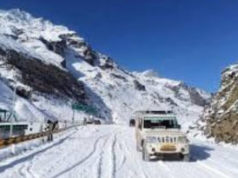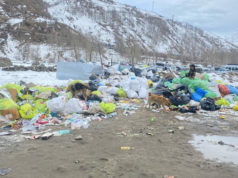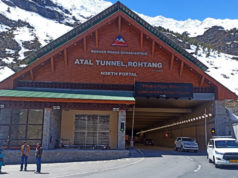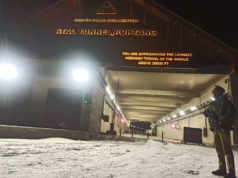Manali – In a concerning turn of events, the Himalayan region faces a severe ecological threat as an unprecedented surge of traffic, totalling 12,000 vehicles, has crossed through the Atal Tunnel. This significant traffic influx is ringing ecological red flags, posing a substantial risk to the fragile biodiversity of the region.
The Atal Tunnel, a vital artery connecting Manali to the Lahaul-Spiti valley, witnessed an overwhelming number of vehicles, setting a new record for traffic volume. Environmentalists and conservationists are expressing growing concerns over the potential impact on the delicate balance of the Himalayan ecosystem.
The Himalayan region, known for its unique and sensitive ecology, is now grappling with the consequences of this surge in vehicular movement. The unprecedented traffic through the Atal Tunnel raises questions about the sustainability of such high volumes and the potential consequences for the flora and fauna in the surrounding areas.
Also Road: Safety Concerns Soar as Unruly Tourists Dangle Dangerously from Moving Vehicles
Adding to the ecological apprehensions, reports indicate a massive traffic snarl on the Manali-Atal Tunnel Road. The congestion has further exacerbated the challenges faced by both local authorities and travellers. The surge in traffic is not only a logistical nightmare but also poses an immediate threat to the natural surroundings.
Local environmentalists are calling for urgent measures to mitigate the impact of this surge in traffic on the fragile ecosystem. The need for sustainable tourism practices, responsible road usage, and enhanced conservation efforts is now more crucial than ever.
As the region grapples with the dual challenges of unprecedented traffic through the Atal Tunnel and the resulting congestion on connecting roads, authorities must take swift action. Striking a balance between development and ecological preservation is the need of the hour to ensure the long-term health and sustainability of the Himalayan ecosystem. The current situation serves as a stark reminder of the delicate equilibrium that must be maintained to protect the unique biodiversity of this ecologically sensitive region.















